Listen & Feel Full Article…
What are Ring Settings?
A ring’s setting refers to its entire design. This essay focuses on mounting or holding the ring’s gemstones. It’s essential to grasp the head and shank before setting a ring. In a ring, the head is the top, where the gemstones are. As the part of the ring that encircles the finger, the shank is also known as the band.
There are many different ring settings, each with pros and cons. Other designs include more metalwork and feel more intricate, while others are lighter and airier. The stone is elevated in some rings, while others are designed with a low profile and durability. You’re sure to find at least one ring setting you like, no matter your preferences.
Types of Ring Settings
It is easy to become overwhelmed by the variety of engagement ring settings and their pros and cons. You can’t go wrong if you focus on what you love, what suits your lifestyle, and what makes you happy to look at it. We’ll start by explaining how gemstones are held to rings.
Halo Ring Settings
The halo ring setting is adorned with a small round diamond ring setting that enhances the ring’s overall appearance and sparkle. For those looking for a romantic, ethereal style with significant visual impact, halo calls to mind an ethereal look. There are multiple ways to achieve the halo, including hidden halos, which are more subtle as they surround rather than surround the center stone. Halo settings can be mounted in many ways, including prong, basket, cathedral, and trellis. A double halo or vintage-inspired sunbursts are possible options for a comprehensive look.
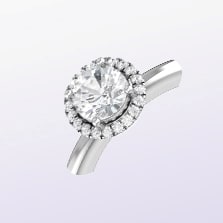
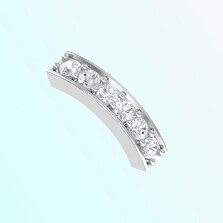
Pave Ring Settings
The pave setting method involves rows of tiny stones that fit into holes on the ring surface. A pavé ring setting is incredibly sparkly and looks like a road covered with diamonds, hence its name. It adds a stunning visual impact to any center stone without drawing attention away from it. Pavé can add a lot of visual appeal to any combination of setting types by accentuating gemstones or metalwork. Due to their small and intricate setting, pavé-set diamonds are more susceptible to loosening and falling out.
Solitaire Ring Settings
A solitaire ring has one gemstone mounted at the head, with just a metal shank for the rest of the ring. Small fingers look better with narrower bands, which make stones look bigger. The diamond can be set in a more versatile way with thicker bands. Solitaire rings can be set in various settings, including prongs and baskets.
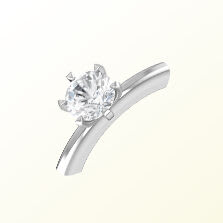
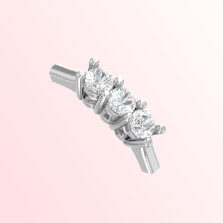
Three-Stone Ring Settings
A three-stone ring consists of a larger center stone and two smaller, complementary side stones of equal size on either side. Due to the raised center stone mounting, the ring’s composition focuses the visual attention on it, with the flanking stones serving as accents. This setting is famous for its incredible sparkle and versatility; it’s the perfect choice for adding some color with sapphires, rubies, and emeralds.
Split Shank Ring Settings
An engagement ring typically features a single band with varying center stone mount and accent stone designs. Rings with elaborate shank designs are also available. A split shank is when the band around the mid-finger splits into two different shanks that keep shifting apart as they wrap around the center stone. The unique and unexpected look emphasizes the center stone and makes it look bigger.
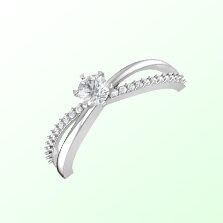
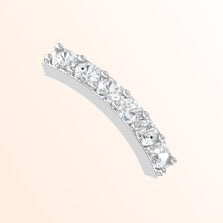
Prong Ring Settings
One of the most popular and classic settings for solitaire engagement rings is a prong setting. Prongs typically hold the stone in place with four or six metal prongs. Curved over the stone’s surface, they hold it securely in place. While all prongs are secure, some are more secure than others, depending on their design and appearance. Prong settings are popular because the placement of the prongs maximizes a diamond’s light return, enhancing its brilliance.
Basket Ring Settings
Basket settings use prongs with an extra feature to hold the center stone in place. Vertical prongs are framed by horizontal bands that form a visual ‘basket’ to hold the gemstone. An engagement ring set in a basket setting will typically sit lower on the finger than a typical prong setting, providing greater security and added durability.
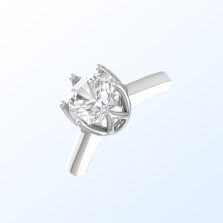
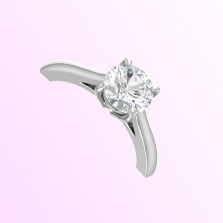
Cathedral Ring Settings
Cathedral settings are super sophisticated and classic. Sweeping arcs surround their outer mount. They have a sculpted look reminiscent of Gothic architecture. Cathedral settings are elegant and allow for hidden details in the crown. The ring sits higher off the finger, enhancing the center stone.
Trellis Ring Settings
Trellis settings are often mistaken for cathedral settings because they feature prongs that interweave or overlap at the bottom, creating an X at the connection between the setting and the shank. It cannot be noticed from a profile angle, so it’s often appreciated as an attractive method of enhancing the center stone without detracting from it. Trellises provide small crevices for dirt and debris to build up, like cathedrals, so it’s more work to keep them clean.
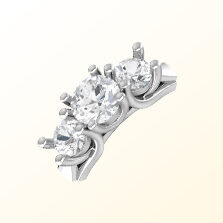
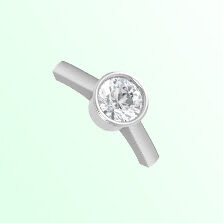
Bezel Ring Settings
The bezel setting is popular because it holds gemstones in place securely. An elegant metal rim surrounds the center stone, holding it securely in place with a modern and clean look. With a full or partial bezel, any shape or size of the center stone can be accommodated. The setting is perfect for active lifestyles or people who work with their hands frequently.
Channel Ring Settings
Channel settings feature gemstones sandwiched between horizontal parallel channels. A small lip of metal at the top of the channels holds the gemstones securely in place since there is no metal separating the gemstones. As a result of the channel setting, the stones are unobstructed and protected, although they may appear slightly less brilliant and sparkly.
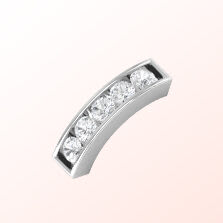
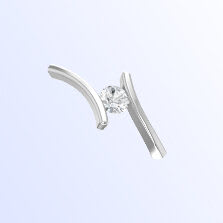
Tension Ring Settings
Tension settings incorporate the tension of the metal band to secure the center stone. This results in a delicately suspended gemstone between the split shanks. The stone’s dimensions need to be calibrated precisely to allow grooves to be cut into the band so that the stone can be held in place with precise pressure. The tension-style setting is often preferred by people who love this setting for added security. A tension setting is achieved using a bezel or prong on the side or underneath to secure the gemstone in place.
How to Pick The Right Diamond Ring Setting?
Diamond ring settings should be chosen based on your center stone and style. If your diamond is large or fancy cut, you might consider adding more prongs to your engagement ring setting. A halo or bezel setting can also offer more security. Your daily habits also influence diamond ring settings. A high-set diamond can chip or fall out if you lead an active lifestyle or work with your hands often. Rings with larger stones can also benefit from a lower setting.
It’s not necessary for you to make this decision on your own. It is easy to choose a setting that suits your needs with the help of an experienced gemologist or jeweler. It is also possible to order a completely custom-made setting for a more personalized touch. Many big box stores sell ready-made settings that you have to resize and add a center stone. Besides the design, you can adjust everything from the metal to the center stone, along with your finger size, when you order a custom setting. It’s super special to know that your ring was made just for your finger.